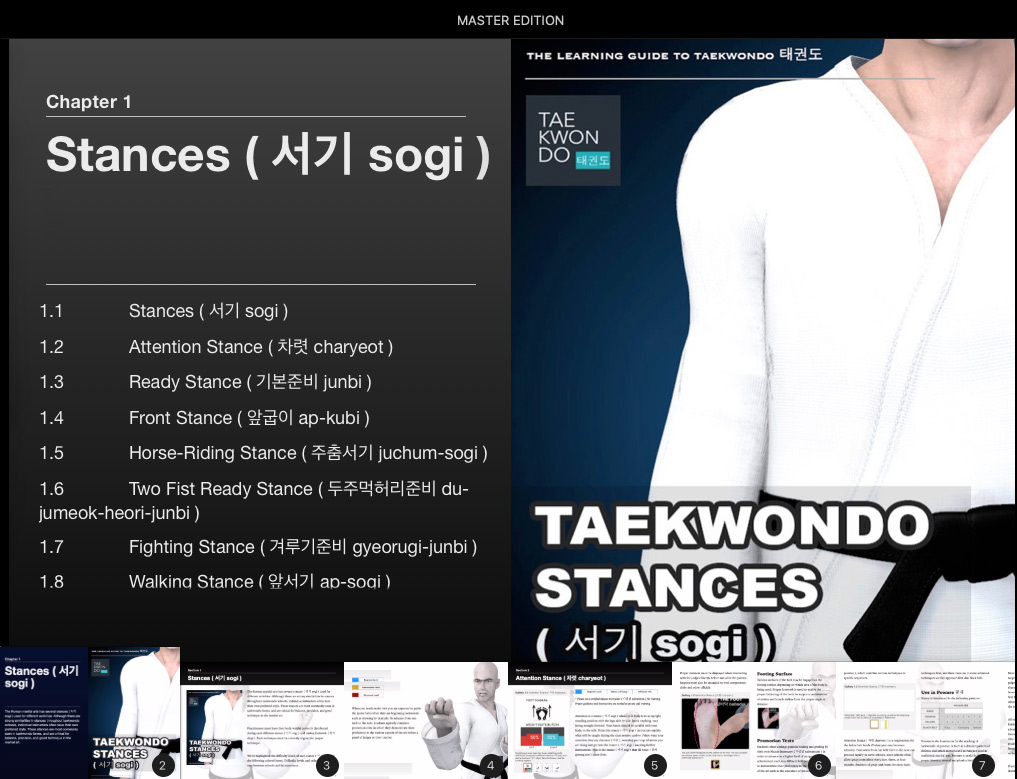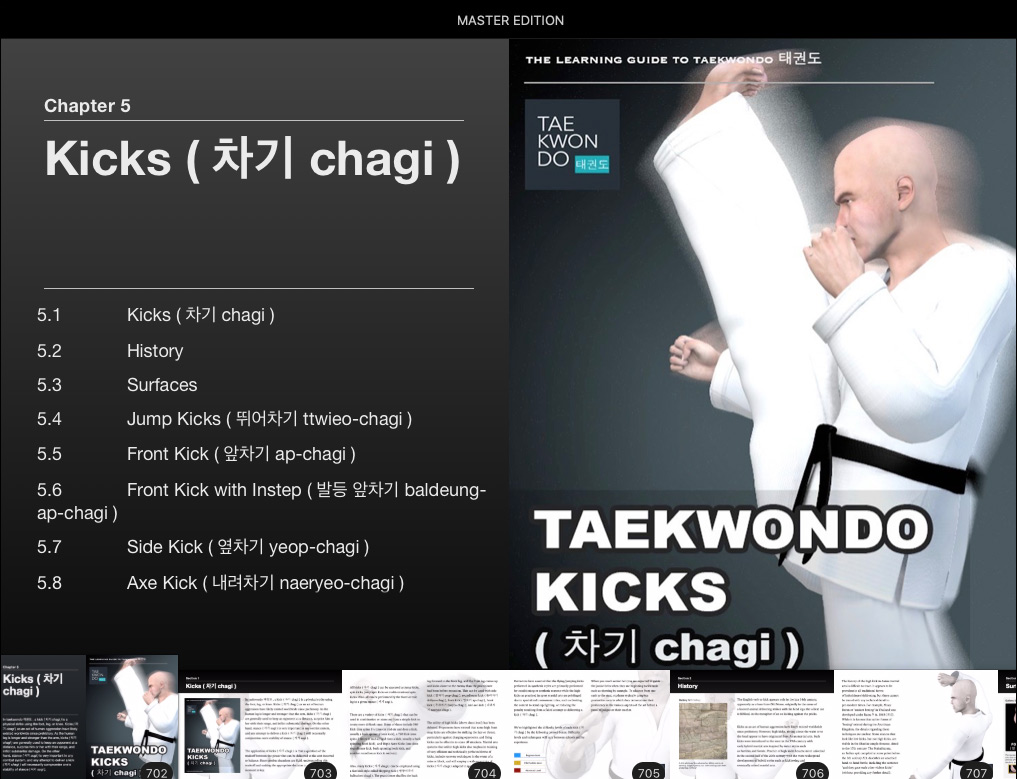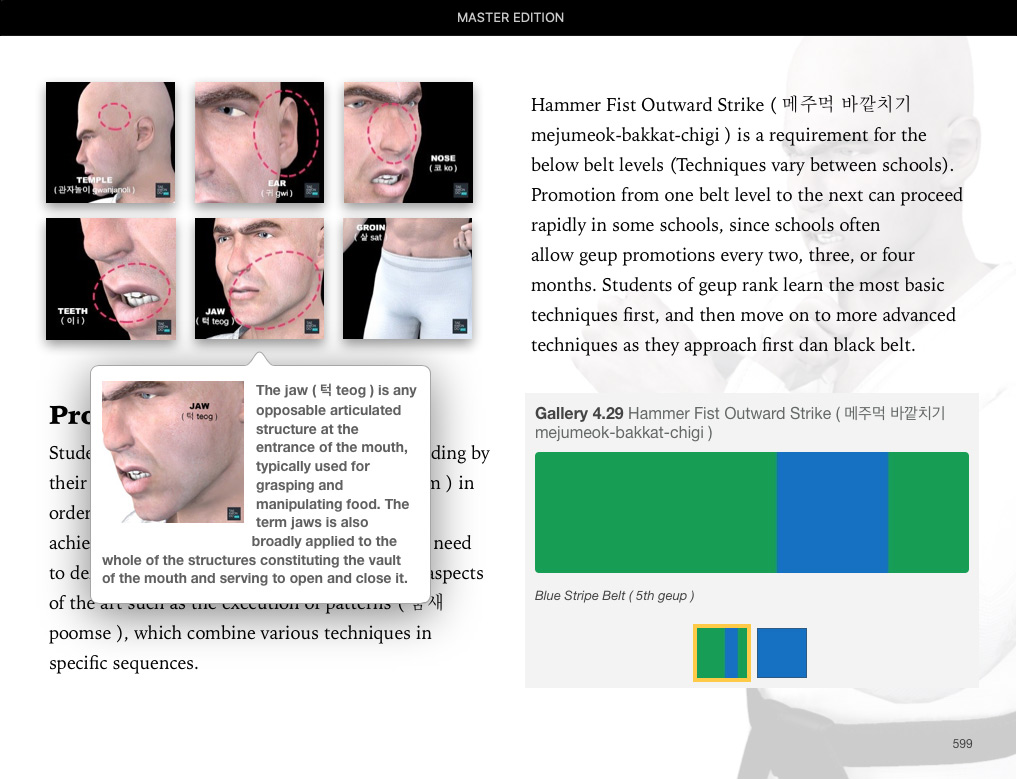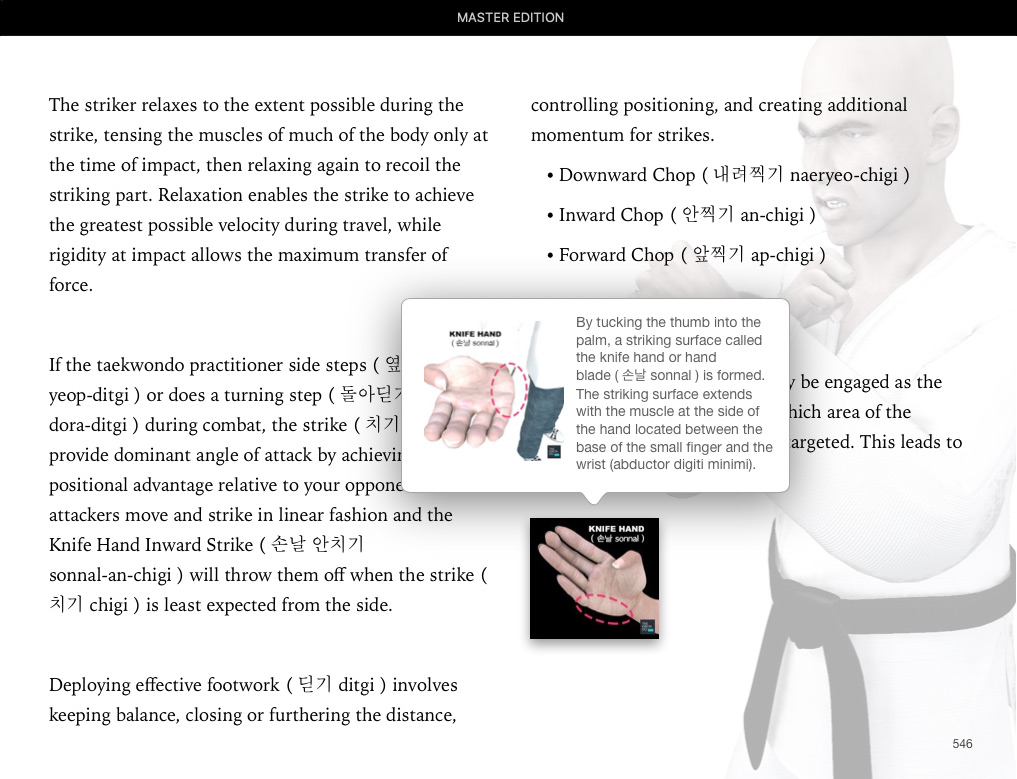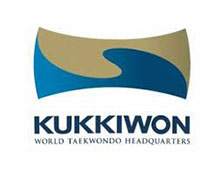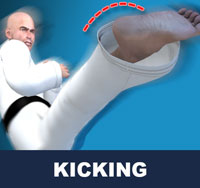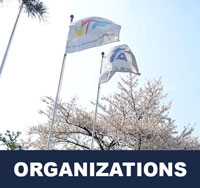Taekwondo 태권도Taekwondo Preschool
Promotion from one geup to the next can proceed rapidly in some schools, since schools often allow geup promotions every two, three, or four months. Students of geup rank learn the most basic techniques first, and then move on to more advanced techniques as they approach first dan. Many of the older and more traditional schools often take longer to allow students to test for higher ranks than newer, more contemporary schools, as they may not have the required testing intervals. View Taekwondo belt levels »

World Taekwondo (WT)
Two of the most popular systems of taekwondo are named solely after their respective organizations: the World Taekwondo (WT) and the International Taekwon-Do Federation (ITF).
The World Taekwondo (WT) is the International Federation [IF] governing the sport of Taekwondo and is a member of the Association of Summer Olympic International Federations [ASOIF]. The World Taekwondo Federation (WTF) was established on May 28, 1973 at its inaugural meeting held at the Kukkiwon with participation of 35 representatives from the world and until this day there is a total of 205 Member Nations. The World Taekwondo Federation (WTF) has renamed itself to World Taekwondo (WT) in 2017. Since 2004, Dr. Chungwon CHOUE [re-elected on April 12, 2005 / Oct. 13, 2009/ July 14, 2013] has acted as the President of the World Taekwondo Federation after the first ever President Dr. Un Yong KIM retired. On July 17, 1980 the International Olympic Committee recognized the WTF at its 83rd Session in Moscow. First, Taekwondo was adopted as a demonstration sport of the 1988 Olympic Games in Seoul, Korea; later, on September 4, 1994 Taekwondo was adopted as an official Sport of the Sydney 2000 Olympic Games at the 103rd IOC Session in Paris, France. According to the World Taekwondo (WT), "Taekwondo is one of the most systematic and scientific Korean traditional martial arts, that teaches more than physical fighting skills. It is a discipline that shows ways of enhancing our spirit and life through training our body and mind". Today, it has become a global sport that has gained an international reputation, and stands among the official games in the Olympics.
Organizational Structure
The main constituents of the World Taekwondo (WT) are the following: The General Assembly (GA); the World Taekwondo (WT) Council; the President and the Secretariat. In addition to its main constituents the World Taekwondo (WT) also encompasses other organizations that have been duly authorized or recognized by the Council and the GA and that operate under the auspices of the World Taekwondo (WT). World Taekwondo (WT)-recognized or authorized organizations include but are not limited to the Continental Unions. The General Assembly is the general meeting of the Council and representatives of MNAs of the World Taekwondo (WT). The GA is the World Taekwondo (WT) supreme decision making organ. Its decisions are final, whereas the Council consists of the President, the Vice Presidents, the Secretary General, the Treasurer and the Council members. Responsibilities of the Council are for example planning and management of World Taekwondo (WT) organization and operations and the control over the financial budget and financial reports. The President is elected by the GA from among its members for a term of four years. The President must lead and represent the World Taekwondo (WT); concurrently lead the GA and the Council as its chairman, and preside over meetings and other activities as well as designate official duties to Vice Presidents on an ad-hoc basis for the betterment of the development of the sport of taekwondo and the World Taekwondo (WT) operations. Furthermore, the President appoints the chairmen and members of the World Taekwondo (WT) Committees. Lastly, the Secretariat of the World Taekwondo (WT) is installed at the location of the World Taekwondo (WT) headquarters for the execution of the secretarial affairs and duties of the President and the Secretary General.
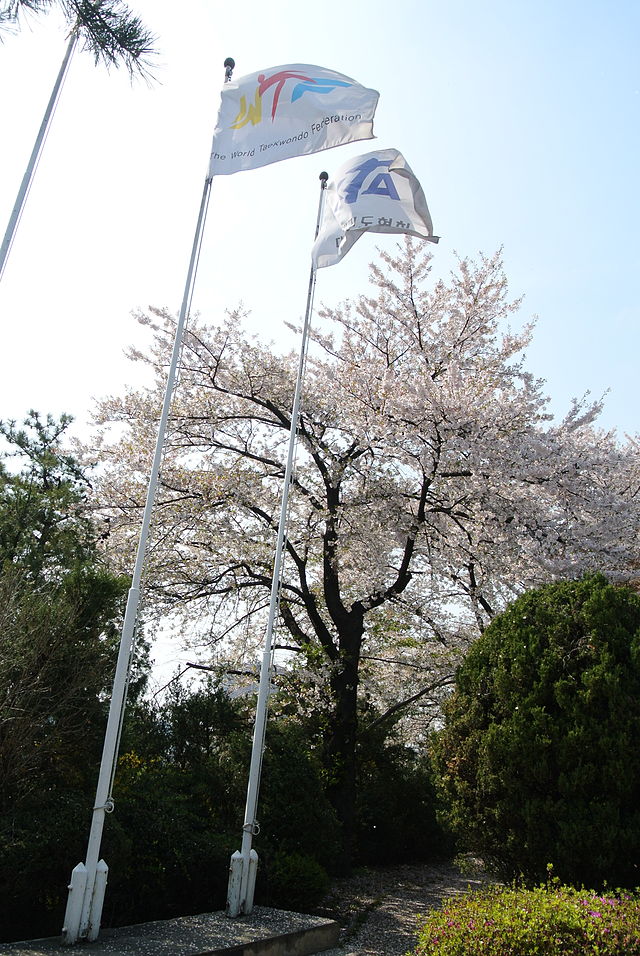
History
The World Taekwondo Federation was established on May 28, 1973 at the inaugural meeting held at the Kukkiwon with participation of 35 representatives from the world. At that time Dr. Un Yong Kim was elected president for a four year term. One of the main Constituents of the WTF, the Secretariat was formed on June 3rd, 1973 and began operating. On October 8th, 1974 the WTF was affiliated to the General Association of International Sports Federations (GAISF), now SportAccord. Until the 1980’s, the European (May, 1976), the Asian (October, 1976), the Pan American (September, 1978) and the African (April, 1979) Taekwondo Unions inaugural meetings were held, while Oceania’s Taekwondo Union was not recognized as the 5th Continental Union of the WTF until July 16, 2005. The recognition of the IOC towards the WTF at its 83rd session in Moscow on July 17, 1980 was the cornerstone for their Cooperation. Thereupon Taekwondo participated in the 24th Olympic Games at Changchung Gymnasium in Seoul, Korea as well as the 25th Olympic Games at the Palau Blaugrana in Barcelona, Spain as a demonstration sport. In recognition of his contribution to the Olympic Movement Dr. Un Yong Kim was awarded the Order of Commander by King of Monaco Rainier on September 21, 1993. Moreover Taekwondo was adopted as an official sport of the Sydney 2000 Olympic Games at the 103rd IOC session in Paris, France on September 4, 1994. Half a year later, on February 15, 1995 the WTF was affiliated to the Association of Summer Olympic International Federations (ASOIF) as a provisional member. After the first appearance of Taekwondo as an Olympic Sport in the Sydney 2000 Olympic Games, the IOC executive board confirms Taekwondo as an Olympic Sport for the 2004 Athens Olympic Games on December 11-13, 2000. Furthermore the inclusion of taekwondo in the Beijing 2008 Olympic Games was confirmed on November 29, 2002 at the 114th IOC session held in Mexico City. On February 15, 2004 the Vice President (Italy) Dr. Sun Jae Park was elected as Acting President of the WTF due to the resignation of the founding President Dr. Un Yong Kim from the presidency of the WTF. Four month later Dr. Chung Won Choue was elected as new President of the WTF at the extraordinary General Assembly on June 11, 2004. Taekwondo was confirmed as program of the 2012 London Olympic Games on July 8, 2005. The World Taekwondo Federation (WTF) has renamed itself to World Taekwondo (WT) in 2017.
Mission and Objectives
The mission of the World Taekwondo (WT) is to provide effective international governance of Taekwondo as an Olympic sport and Paralympic sport. The envisioned objectives of the World Taekwondo (WT) are to promote, expand, and improve worldwide the practice of taekwondo in light of its educational, cultural, and sports values (the “Taekwondo movement”) and to promote fair play, youth development, and education as well as to encourage peace and cooperation though participation in sports. Moreover the World Taekwondo (WT) wants to promote or sanction international taekwondo competitions and relating to those the World Taekwondo (WT) resolves to constantly improve technical rules regulating taekwondo competitions and poomsae competitions sanctioned or promoted by the World Taekwondo (WT), including the taekwondo event of the Olympic Games and Paralympic Games. Furthermore the World Taekwondo (WT) wants to take action in order to strengthen the unity and protect the interests of the World Taekwondo (WT) and the Taekwondo Movement as well as to engage in other activities in support of the above objectives. The World Taekwondo (WT) undertakes its missions and objectives in cooperation with independent affiliated organizations including the World Taekwondo (WT) Academy, World Taekwondo (WT) Taekwondo Peace Corps, World Taekwondo (WT) Demonstration Team, World Taekwondo (WT) Pro Taekwondo Foundation, Global Taekwondo Support Foundation and World Taekwondo (WT) International Foundation.
Rules and Regulations
The World Taekwondo (WT) established the “Statutes” to fairly and smoothly manage all matters pertaining the organization at all levels and its Continental Unions and member National Associations, ensuring the application of standardized rules. The World Taekwondo (WT) Statutes state very accurately every detail that has to be considered to successfully govern the organization. It includes the duties of the governing bodies as well as the officials; the organizations’ mission and objectives; rules regarding membership; it presents the World Taekwondo (WT) promoted championships etc.
World Taekwondo Federation Statutes Table of contents:
- WORLD TAEKWONDO - Presenting the Organization, their Mission and Objectives
- ORGANIZATION - Mainly stating the duties of each of the governing bodies as well as those of the officials
- MEMBERSHIP - Explains how to become a member as well as their rights and responsibilities
- CONTINENTIAL UNIONS - Recognition and Requirements
- ACTIVITIES AND RESOURCES - Mainly presenting World Taekwondo (WT) promoted Championships and financial agreements
- COMMITTEES - A list of all the existing committees
- SANCTIONS - Discussing sanctions and dispute resolutions
- GENERAL PROVISIONS - Most importantly declaring the way of modifications as well as Abbreviations and Definitions
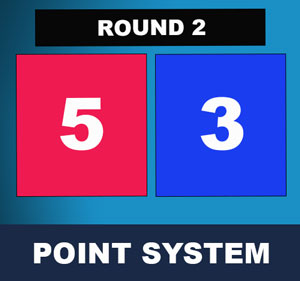
Highlight World Taekwondo (WT) Tournament Point System
Under World Taekwondo (WT) and Olympic rules, sparring ( 겨루기 gyeorugi ) is a full-contact event and takes place between two competitors in an area measuring 8 meters square. Points are awarded for permitted, accurate, and powerful techniques to the legal scoring areas; light contact does not score any points. The only techniques allowed are kicks ( 차기 chagi ) (delivering a strike using an area of the foot below the ankle) and punches ( 지르기 jireugi ) (delivering a strike using the closed fist). The referee can give penalties at any time for rule-breaking, such as hitting an area not recognized as a target, usually the legs or groin ( 샅 sat ). View Tournament Point System »
* Please see a certified Master Instructor ( 사범님 sabeomnim ) for training. Proper guidance and instructions are needed to ensure safe training.
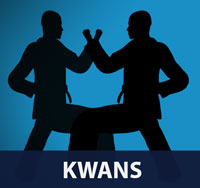
Related Articles
Original Taekwondo Kwans ( 관 )
In addition to these private organizations, the original taekwondo schools ( 관 kwans ) that formed the organization that would eventually become the Kukkiwon 국기원 continue to exist as independent fraternal membership organizations that support the World Taekwondo (WT) and the Kukkiwon 국기원. The official curriculum of the kwans is that of the Kukkiwon 국기원. The kwans also function as a channel for the issuing of Kukkiwon dan and poom certification (black belt ranks) for their members. View Taekwondo Kwans ( 관 ) »
RESOURCES
This article uses material from the Wikipedia article "World Taekwondo", which is released under the Creative Commons Attribution-Share-Alike License 3.0.





